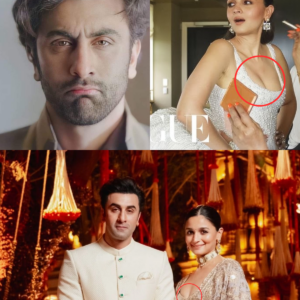Alia Bhatt has firmly established herself as one of Bollywood’s most sought-after actresses. Her career trajectory showcases a series of successful films and commercial endorsements that have kept her in the spotlight. As a prominent figure in the Indian film industry, Bhatt’s influence extends beyond the realm of cinema into the sphere of advertising, where her involvement with various brands highlights her significant role in shaping consumer perceptions and preferences.

Alia Bhatt’s foray into brand endorsements is noteworthy. She has been associated with numerous brands, reflecting her substantial appeal and market value. Her image and persona make her an ideal candidate for brands seeking to connect with a diverse audience. Bhatt’s endorsements span various sectors, from fashion and beauty to technology and lifestyle, underscoring her versatility and broad appeal.
However, recent developments indicate that Bhatt’s association with certain brands has faced challenges. Notably, there has been a noticeable reduction in her commercial appearances for a specific traditional clothing brand. This shift has raised questions about the impact of her endorsements on brand perception and commercial success. The traditional clothing brand in question, known for its royal and sophisticated image, has seemingly reduced its commercial features involving Bhatt. This change prompts an examination of potential factors influencing this decision.
Alia Bhatt’s impact on brand endorsements is multifaceted. On one hand, her involvement enhances brand visibility and attracts a wide customer base. On the other hand, controversies or shifts in public sentiment can affect the efficacy of such endorsements. For instance, there have been instances where Bhatt’s association with certain brands sparked debate or criticism. This has been particularly evident in cases where the brands or products have been perceived as inconsistent with Bhatt’s public persona or values.
One notable controversy involves Bhatt’s stance on traditional practices, which has garnered significant attention. In particular, her opposition to certain ritualistic practices, such as “Kanya Daan” (the practice of giving away a young girl in marriage as part of religious ceremonies), has been met with mixed reactions. This practice, deeply rooted in cultural and religious traditions, has faced criticism for being outdated and inconsistent with contemporary views on gender equality. Bhatt’s vocal stance against such rituals has resonated with a segment of the population that advocates for progressive change, yet it has also drawn criticism from those who view it as an affront to cultural norms.

The debate surrounding Bhatt’s endorsements and her public statements illustrates a broader trend in the advertising industry, where celebrities’ personal beliefs and public personas increasingly influence their commercial engagements. In a digital age where information is rapidly disseminated, the alignment of a celebrity’s values with a brand’s image can significantly impact the effectiveness of endorsements. Brands must navigate this dynamic carefully, balancing the potential benefits of a high-profile endorsement with the risks associated with public perception and controversy.
Furthermore, the evolving nature of consumer expectations and social values plays a crucial role in shaping brand endorsement strategies. As societal attitudes shift, brands must adapt their approaches to resonate with contemporary values while maintaining authenticity. Alia Bhatt’s case highlights the intricate interplay between celebrity endorsements and evolving social dynamics, underscoring the importance of aligning brand messaging with changing consumer sentiments.
In conclusion, Alia Bhatt’s role in Bollywood advertising exemplifies the complex relationship between celebrity endorsements and brand success. Her extensive involvement with various brands underscores her marketability and influence. However, the challenges faced by her endorsements, including controversies and shifts in public perception, reflect broader trends in the advertising industry. As brands continue to navigate the intersection of celebrity influence and social values, the lessons from Bhatt’s career offer valuable insights into the evolving landscape of commercial endorsements and consumer engagement.
News
WATCH Meri shaadi Virat Kohli se honi chahiye – Shahrukh Khan | Anushka Sharma Hilarious Reaction| HC
In a recent twist of events, Bollywood superstar Shahrukh Khan made headlines with a playful comment about a potential marriage…
Deepika Padukone Blessed With Her First Baby With Ranveer Singh After Her Pregnancy
In a heartwarming turn of events, Bollywood’s beloved couple Deepika Padukone and Ranveer Singh have welcomed their first child together….
WHY ? Abhishek Bachchan Got Angry To Aishwarya Rai | Full Video | Sarbjit Grand Premiere
When Abhishek Allegedly Walked Out On Aishwarya Leaving Her Embarrassed On Red Carpet Back in 2016, at the premiere of…
The Real Reason Aishwarya Rai and Abhishek Bachchan Will Never Get Divorced – And It’s Not What You Expect!
Truth behind Abhishek Bachchan ‘denying divorce rumours’ with Aishwarya Rai; old video of actor causes confusion. Watch No, reports of…
Internet reacts to Ranbir Kapoor’s remark about Alia Bhatt letting go of personality in marriage: ‘Girl, run far’
Alia Bhatt and Ranbir Kapoor tied the knot on April 14, 2022, after dating for a few years. They held…
“My motto has never been to chase excellence”- Virat Kohli’s shocking admission on 16th anniversary of international cricket
Virat Kohli of Team India. Image Credit: Star Sports X Table of Contents As the cricket world celebrates 16 glorious…
End of content
No more pages to load













Leave a Reply